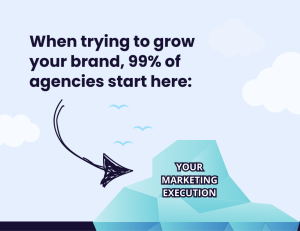
*originally published in HACKERNOON*
I am originally from Australia. There, I started working with small and medium-sized businesses – many companies in various fields. The impact of venture capital on business is not very significant; these were real enterprises that know the value of the dollar, and not just strive to grow at any cost. They grew and developed to live, support their families, invest, and have great success in business.
Working in London, I learned a lot about venture-capital-backed companies and how they are developing. In my opinion, they are developing incorrectly. The overwhelming majority of these businesses depending on venture capital has an obvious negative outcome.
These companies have to do what they really don’t want to do. Why? Because there are people outside the business who say, “It doesn’t matter if you spend more money to keep the business growing, and we attributed this success to our foundation.” This is all very far from real business. After all, venture capitalists invest in ideas, and it doesn’t matter that 90% of them fail. In addition, it is terrible continuous stress for everyone involved in the business process.
——–
All this prompted me to create my own store company and develop new algorithms that will stimulate the sustainable development of brands. By that time, I already understood that if the business is being done wisely, it can show significant and rapid growth, while all participants will enjoy the process.
Any business can be scaled up quickly and with high profitability. For this, we only need processes that improve but do not constrain; strategy aimed at building winners and the right team. Therefore, I am convinced that growth is very important for business and the profit and other financial components are just a result. True, there is one clarification – sales cannot grow constantly quickly. It is normal when there is up and down movement. But what is very important is to react to the fall, analyze errors and react to them.
The main engine of progress is modern trends
Growth marketing is the main engine of company progress. It is this trend in modern marketing that is responsible for the growth, expansion, and promotion of a business through innovative developments. Growth marketing features become clear in comparison with traditional marketing in the form in which we are used to understanding it.
Classic marketing can be seen in large retailers with established distribution services. They already have an established client base with which they work through traditional communication channels, such as, for example, TV, newspapers and magazines, and so on. That is, traditional marketing is mostly about getting a message across to existing customers or protecting your market share, for example.
Whereas Growth marketing is focused on quickly attracting new customers using communication channels such as social networks or Google, where you can instantly see if it works or not, as well as see other drivers that affect performance. It could be conversion rate optimization, email, SMS.
To make it clearer, I’ll give an example.
One of the tools of any marketing is email newsletters. This is a very important tool for working with our brands. By the way, in the North American market, users, that is, our potential customers, after receiving an email, make purchases more often than they do.
Using the growth approach, we decided to experiment with customer reviews in direct mail – try to use information from one communication channel in another and see what happens. We added text reviews of our real customers to the mailing list to new customers, which they left on Google. Our analysts constantly analyze statistics on open emails, conversions, etc.
Therefore, we saw an increase in site visits and purchases almost in real-time. Then we went further and added photos of purchased products in the interiors of our clients to direct mail, and analytics showed an even greater increase in conversion.
That means, in a sense, Growth Marketing is a shorter marketing cycle during which you can learn, test, and interact much faster. And the main difference between Growth marketing and conventional marketing is the engineering and systems approach.
Here’s another iconic example of growth marketing that also builds on customer feedback.
After a successful year, one of our competitors decided to shoot an image video that looked more like a short film. They used small children, cute pets, exotic plants, and beautiful interiors in the frame. Let’s be honest, it looked very beautiful.
Their next step was the placement of image materials created in the same style as a video in the press, on huge billboards, transport, TV – they practically filled the largest cities. Of course, we do not know the total budget of the advertising company, but we think that it was estimated at millions of dollars.
Our story: In order to try to keep up with the competitor, we asked our new users to take a photo or video of unpacking our products and send them to us, for which we gave them a discount on their next purchase. We received a lot of photos and videos and are very grateful to everyone who responded to this request. We made a 30-second video from the received content and posted it on social networks. The result was an explosive growth in sales almost 3 times, and the video went viral. The budget for the production of the video was $300.
—–
Hence the conclusion; constant experimentation, conversion optimization at different stages, analysis of indicators, monitoring active users and identifying their needs – it’s all about Growth Marketing. At the same time, an important thing to remember is that before deciding on the growth marketing ideas that will be used in the current environment, it is important to first focus on analyzing the strategic needs of the project.





